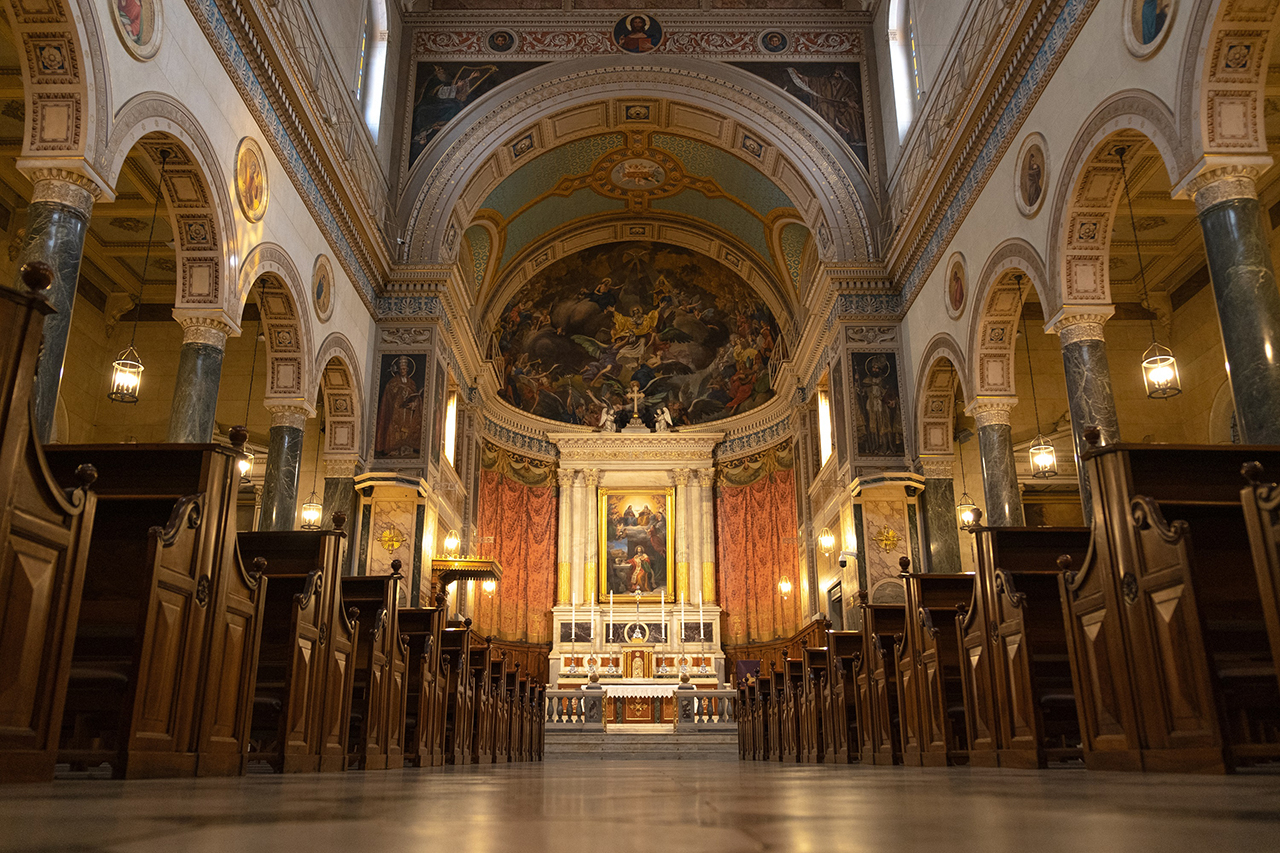Contact
ADDRESS
STAVROS NIARCHOS FOUNDATION
CULTURAL CENTER
364 Syggrou Avenue, Kallithea
TEL.
Box Office:
+30 213 0885700
Box Office email:
boxoffice@nationalopera.gr
Daily 09.00-21.00
info@nationalopera.gr
Register to our Newsletter


Chamber version by Jacques-Nicolas Lemmens (London, 1878)
Markellos Chryssicos conductor
Soloists:
Myrsini Margariti soprano
Theodora Baka mezzo-soprano
Antonia Tzitzika mezzo-soprano
Sophia Patsi mezzo-soprano
Yannis Filias tenor
Marios Sarantidis bass-baritone
Georgios Papadimitriou bass-baritone
Sophia Tamvakopoulou fortepiano
Konstantinos Raptis bayan
Practical information:
- Audience members can enter all venues for free, on a first come first served basis. No advance booking is required.
- Due to the limited space available in many of the festival venues, some of the concerts will be repeated up to three times per day, to give the chance to as large an audience as possible to attend them.
- The concerts of the festival will be of short duration (from 25 to 40 minutes on average), so that audience members can attend more than one, if they wish so.
- The distance from one venue to the other is small, so that audience members have the chance to enjoy many of the festival events.
- The detailed programme will be available online at nationalopera.gr and digitalculture.gov.gr, while the printed programme that will be distributed to the public will include a map with all the venues, summary descriptions of the events, and QR codes referring to the detailed programme on the GNO website.
- All preventive measures against COVID-19 will be adhered to in all venues.
Starts at 19.30 | 
Duration: approx. 60 min.
Capacity max. 400 person

Gioachino Rossini’s Stabat Mater has a very interesting story, typical of so many music works written in troubled times, as far as publishing rights and mainly copyrights are concerned.
The work was commissioned in 1831, while Rossini was on a trip to Spain, by Manuel Fernández Varela, a clergyman and governmental advisor, to whom the composer dedicated it. Rossini immediately started working on Stabat Mater, but due to health reasons, possibly a lumbago or a prior infection from gonorrhea, he had to stop right after his return to Paris. Under his customer’s pressure to deliver the work, he secretly assigned his colleague Giovanni Tadolini to finish the rest of Stabat Mater, which was finally presented by Tadolini himself in Madrid in 1833.
After Varela’s death the following year, Rossini’s autograph manuscript ended up in the hands of French publisher Antoine Aulagnier, who bought it from Varela’s lawful heirs for 2,000 francs. As soon as Rossini heard that, he disowned this particular version informing Aulagnier about Tadolini’s contribution. Aulagnier, in turn, decided that Stabat Mater would be performed in Paris only with the six “original” pieces. Rossini, however, with his characteristic business wit, had already contacted publisher Eugène Troupenas to give him a new version of the score of Stabat Mater, in which he had replaced Tadolini’s six pieces with four he composed himself. The litigation between the composer, the two publishers and the claimants of related rights ended with the premiere of the work concluded by Rossini and with the rights to its public performance bought by Théâtre-Italien at ten times the initial price.
Today’s transcription for piano, harmonium, and small vocal ensemble –according to the model of Petite messe solennelle’s original version– was published in London in 1879 thanks to Jacques-Nicolas Lemmens, an organ and Mustel harmonium virtuoso. Let it be noted that Rossini himself had also thought of using accordion as an alternative to harmonium. — M. C.
Catholic Cathedral Basilica of St Dionysius the Areopagite
The Catholic Cathedral Basilica of St Dionysius the Areopagite stands at the junction of Panepistimiou avenue and Omirou street in Athens, right next to the ornate building of Ofthalmiatrio. It is the seat of the Catholic Archbishop of Athens and it is dedicated to St Dionysius the Areopagite, disciple of Apostle Paul and first bishop of Athens. It started being built in 1853 under the famous German architect Leo von Klenze, but its design was modified during the construction stage by Greek architect Lysandros Kaftanzoglou. Although it was still unfinished, the Cathedral opened its gates for the first time in 1865. In the years that followed until the first decades of the 20th century additions were made to the building, and in 1960 it was attempted to renovate it for the first time. During the period 1992-1998 it was fully restored internally and externally. Today it is an attraction both for the citizens of Athens, Catholics or not, and for numerous groups of pilgrims and tourists from all over the world.
First Sacred Music Festival info leaflet available to read and download here
STAVROS NIARCHOS FOUNDATION
CULTURAL CENTER
364 Syggrou Avenue, Kallithea
Box Office:
+30 213 0885700
Box Office email:
boxoffice@nationalopera.gr
Daily 09.00-21.00
info@nationalopera.gr